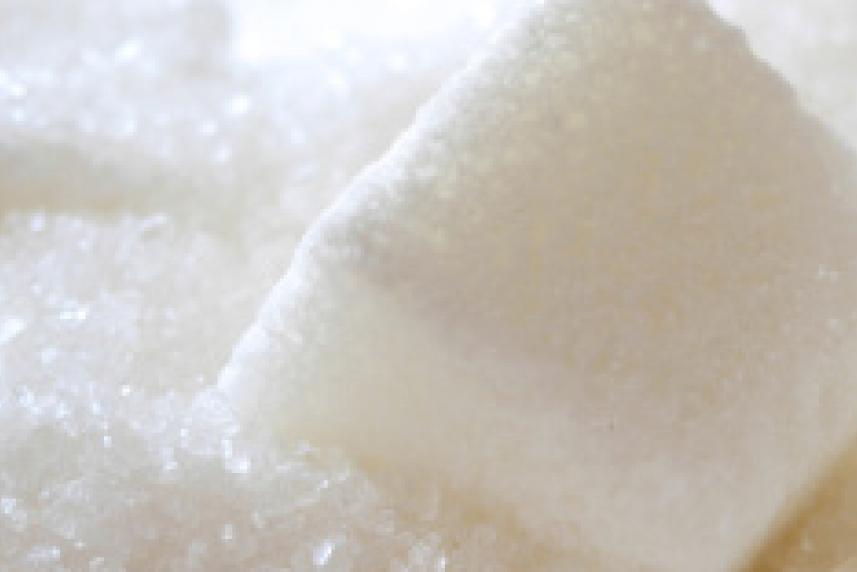Sugar and Weight Loss: Cut Out Sneaky Sources
Make smart swaps for a slimmer, healthier you

Your sweet tooth gets a bad rap. It takes the blame when you add extra sugar to your coffee and when you find yourself with a bowl of ice cream after dinner. But your love for sweet treats is part of a bigger problem: a palate adjusted to a sugar-heavy diet that’s been built up by a flood of processed foods.
Here’s the thing: All added sugars—from honey to high fructose corn syrup to plain old white table sugar—are unnecessary. “The body does not actually need added sugar. It’s going to get the fuel it needs from other things like complex carbohydrates," says Michelle Dudash, RD, and author of Clean Eating for Busy Families. “Any type of added sugar is full of calories, and it doesn’t provide any beneficial nutrients.”
Why Sugar Makes Us Gain
Because of all those extra calories, adding sugar into your diet is a recipe for weight gain. A study from New Zealand found that those who consumed more added sugars gained 1.6 pounds a year. That’s not to say that sugar is the crux of all weight problems—there are plenty of calorie-dense foods out there. The problem with sugar is that it’s not just calorie-dense: It has no nutritional value. So by cutting sugar, you’ll be cutting calories without giving up any of the good-for-you things, such as fiber, protein, and minerals.
Simple Ways to Use Less Sugar
- Read Nutrition Labels: Processed foods have slowly increased the amount of sugar we consume, so it’s imperative to always read the nutrition panel—even if the food has naturally occurring sugar, like from dried fruit. Any type of added sugar should be far down on the list.
- Know the Sizes: One teaspoon of sugar, or 15 calories, corresponds with about 4 g of sugar. Check the label to know how much you’re getting.
- Watch What You Drink: The top source of added sugar in contemporary diets is beverages. Cut back on soda, sports drinks, and juice drinks.
- Prepare Your Food: “When you’re cooking your own food, you’re not going to be adding additional sugar," Dudash says. Even in the most savory of pre-prepared dishes you’ll find added sugar, simply because it’s an easy way to make food taste better.
Cut Out Sneaky Sugar
If you’re looking to reduce the amount of added sugar in your diet, Dudash recommends a slow approach. Changes are “more likely to stick if you go gradually, and you’ll be more likely to enjoy it,” she says. Start by getting rid of added sugars at one meal. After that goes well for a couple days, try another meal. Eventually your palate will adapt to a low-sugar diet, enough so that the ripest of fruits and a square of dark chocolate will be enough to satisfy your sweet tooth. Start with these doable tips for each meal:
Breakfast
- Yogurt: When you choose a flavored yogurt, look at the nutrition facts, and choose one that only adds fruit as a sweetener. Better yet, buy plain yogurt and sweeten it with fresh fruit.
- Cereal and Granola: Look for something with 5 g or less of sugar. “If sugar is the first or second ingredient, put it down," Dudash says.
- Oatmeal: Flavored instant oatmeal packets can be really high in sugar, but old-fashioned oatmeal is almost as easy to prepare. Microwave your oats with raisins, which naturally sweeten as they cook.
Lunch
- Salad Dressing: “When it comes to salad dressing, you want to pick one without added sugars, which can masquerade as something like ‘brown rice syrup.’ They look pretty innocent, but a lot of vinaigrettes have added sugar," Dudash says. If you can, make your own balsamic vinaigrette by mixing balsamic vinegar, olive oil, and a little salt and pepper.
- Condiments and Sauces: These are often loaded with high fructose corn syrup, so use them minimally. Avoid anything that sounds fruity, like an orange sauce, which will tend to have more sugar than a savory sauce. Tomatoes have naturally occurring sugar, so ketchup is just unnecessary added sugar. Instead, go straight to the source and use an actual tomato.
Snacks
- Energy Bars: These convenience foods can be packed with sugar. Check ingredient lists to choose one with the least amount of sugar.
- Dried Fruit and Nut Mixes: Make sure there isn’t any added sugar. Dried cranberries are notorious for having added sweetener, but things like raisins, apricots, and dates are generally au naturel.
Dinner
- Sauces: Pasta and stir-fry sauces can contain added sugars, but that doesn't mean you need to concoct your sauces from scratch. By cooking at home, you can control the amount used and steer clear of dine-out options that have too much extra sugar.
Even if you’re extremely diligent and keep the added sugar in your diet at a minimum, everybody needs a treat once in while. Dudash recommends keeping dark chocolate, whole-grain graham crackers, raisins, and natural peanut butter in your pantry. If you’re not used to the more bitter taste of dark chocolate, it’s best to start gradually. Start at 60% cacao and then slowly up the percentage. As the percentage increases, the added sugars decrease. Your sweet tooth will be more than satisfied.



